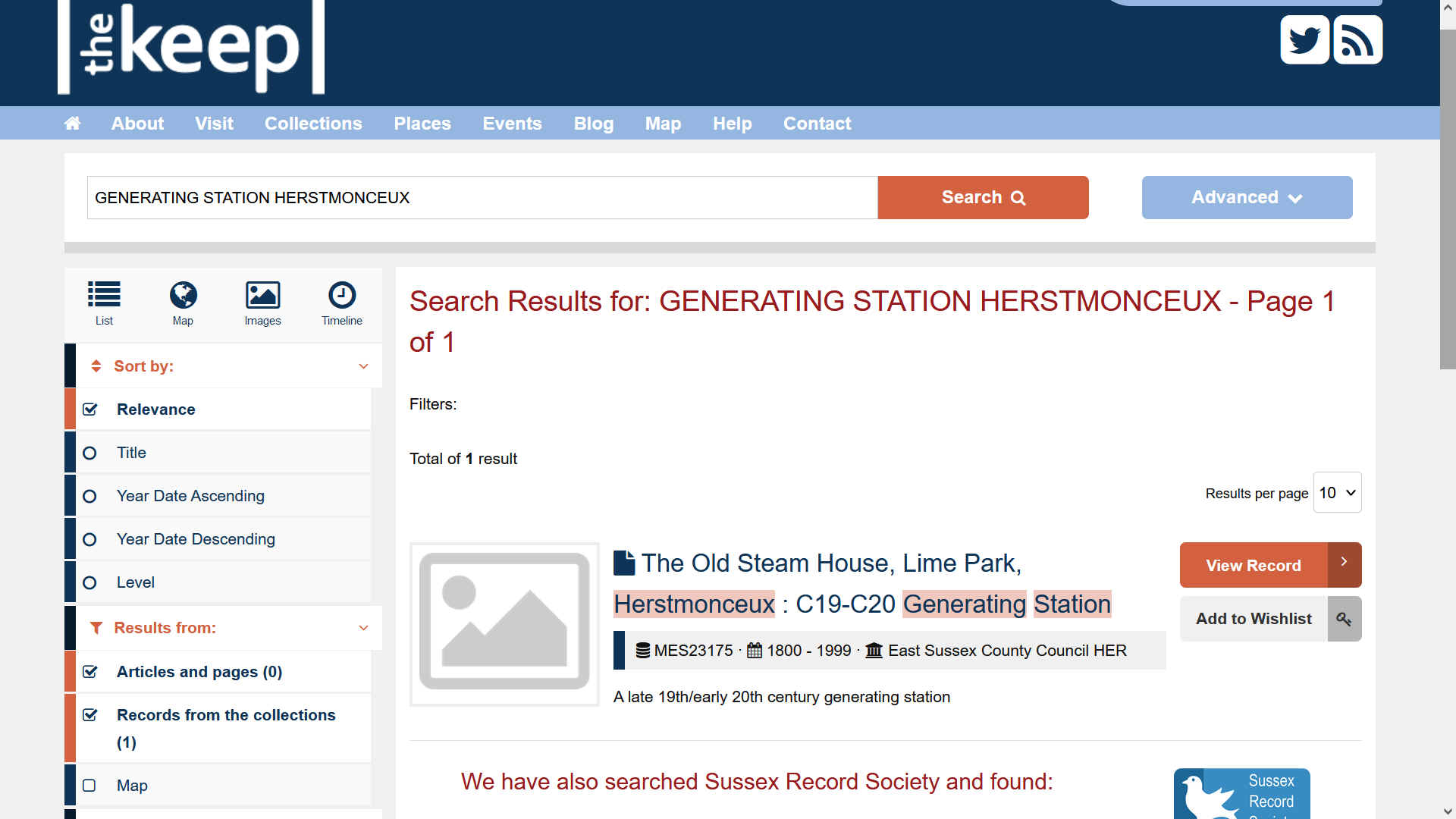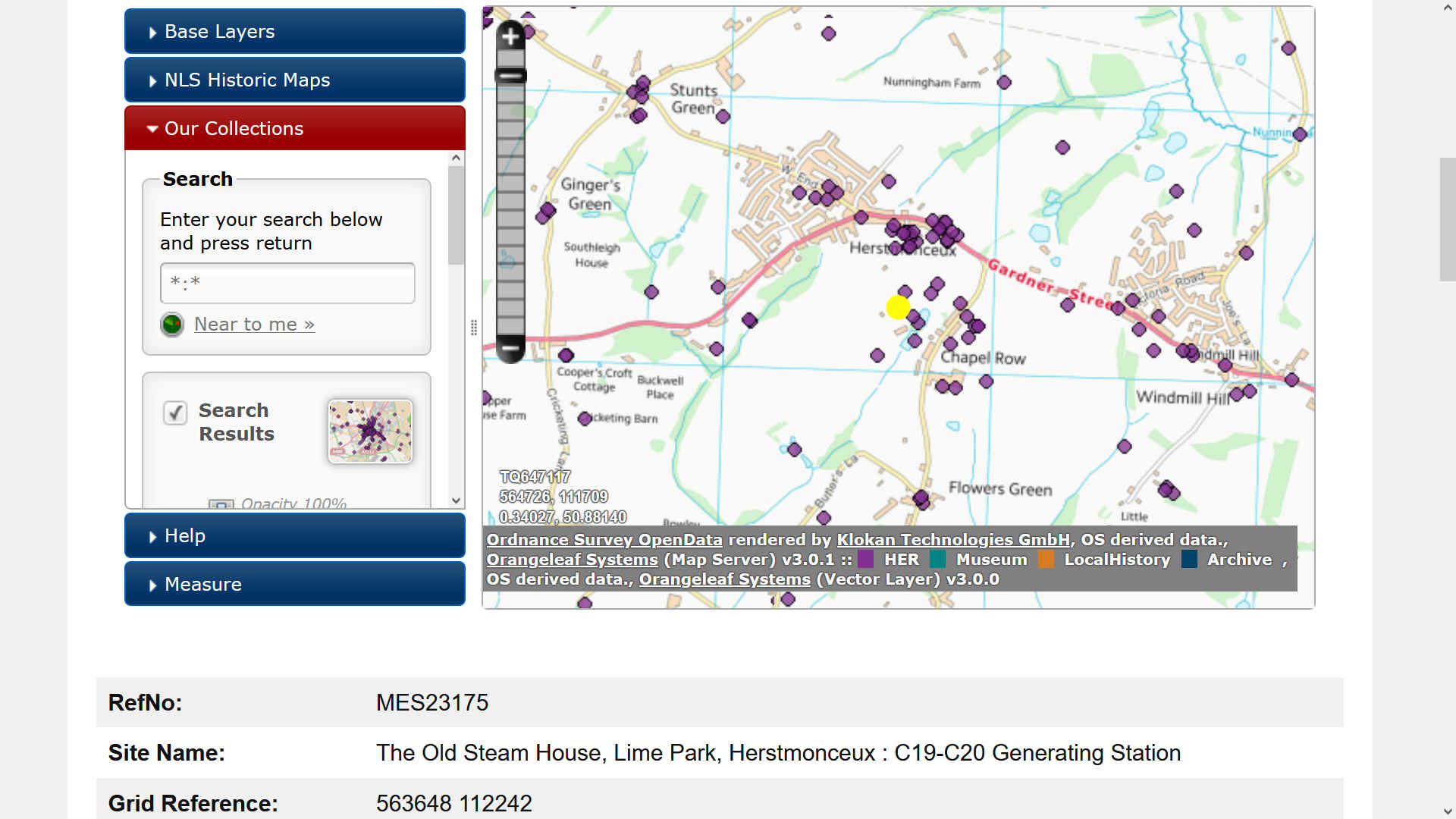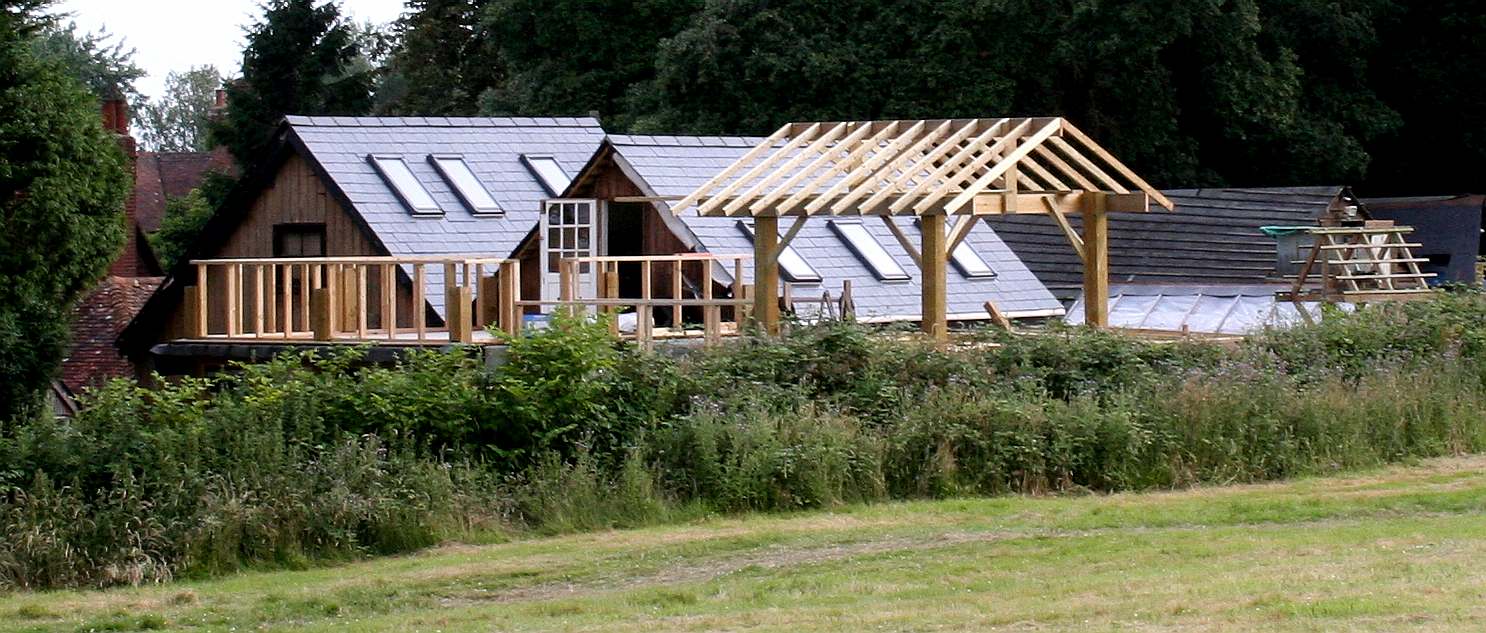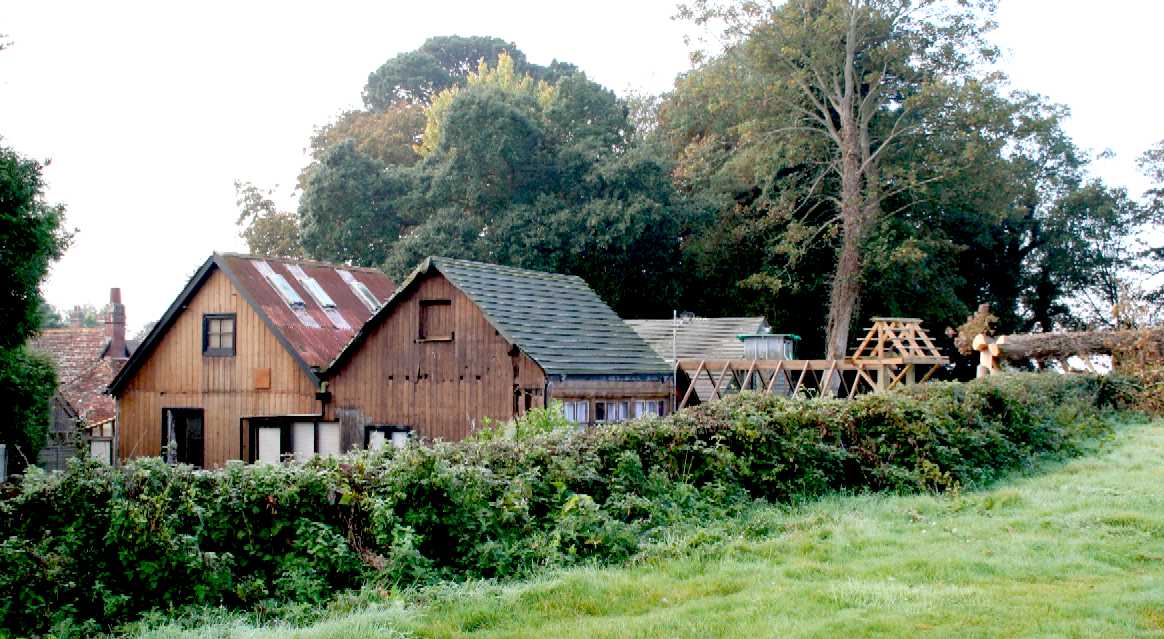|
THE KEEP - EAST SUSSEX COUNTY COUNCIL MONUMENT RECORDS
Please use our A-Z INDEX to navigate this site or return HOME
|
RARE SURVIVING TIMBER BUILDING - When Howard Carter discovered Tutankhamun's tomb in 1922, the dig was not much to look at. A lot of sand and a small entrance, amongst a desert of dunes. But once inside, the small chamber, the Egyptologist realised that the monument was intact. Hence was a treasure trove.
The old Generating Works in Lime Park is not of outstanding design or construction (except for the use of redwood and architrave). The astonishing fact is that it remains extant, where others have been demolished by property developers, or rotted away. Indeed, many former residents in Lime Park, and two recent newcomers, have not grasped that this is all that is left as evidence of our transition from coal, to electricity. The only example surviving anywhere on the planet of its kind, including load levelling via a giant battery store proportional to the enterprise, comprising roughly half of the building, with substantial shelves where weighty glass lead-acid batteries were stored, to power the whole village of Herstmonceux, and Lime Part estate, overnight.
Following a site survey and subsequent Report by London University's Archaeology South East in 1999, East Sussex County Council admitted this industrial complex to their Site Monument Record (SMR) under reference number: MES23175.
DESCRIPTION
The generating buildings were unusually for a coal-fired installation, constructed in timber, thought to be of a redwood variety. The building is double gabled using a three layer roof system, consistent with the period: truss, purlins and rafters.
According to Ron Saunders, the building was lined inside and out with timber boarding. It has not been substantiated, but is widely believed that the building had a slate roof. Later, as a fire precaution (after generation ceased in 1936) the building was covered in corrugated iron. At this time timbers were stripped from the building, leaving some areas, just a bare timber framework.
The quality of the timber joinery and internal lining, wherever extant, is far higher than would be expected in an industrial building. There are mouldings and architrave on the frames and in corners even where one may not have appreciated the craftsmanship.
The buildings are the most obvious physical evidence of the generating station. Yet, other features remain on and in the ground as important clues to the type and capacity of machinery.
The dimensions of the
concrete mounts and the flywheel trough indicate a medium size reciprocating steam engine. A
One of the buildings was included in the Monument Protection Programme undertaken by English Heritage.
A building occupying a similar footprint to Limestone cottage is shown on the 1st edition OS mapping.
No change in the shape of the building can be seen on the 2nd edition OS.
By the 3rd edition OS the single building has been replaced with two small square buildings, occupying the same footprint as the modern structure.
MONUMENT TYPE: POWER STATION
EVIDENCE: EXTANT BUILDING
NATIONAL GRID REFERENCE: TQ 6364 1224 (TQ61SW)
CIVIL PARISH: HERSTMONCEUX DISTRICT: WEALDEN
ARCHAEOLOGICAL NOTIFICATION AREA: 1621 CHAPEL ROW (ACTIVE) DES10982
The Trust needs help to maintain this interesting industrial complex. The buildings have no reasonable or beneficial use as of July 2023, though maintenance costs are on the rise. Leading to inevitable decay, if not given a reason to invest the significant sums to restore.
Additionally, in 1999, Herstmonceux Generating Station was included on Step 4 of a Monument Protection Programme (MPP) undertaken on behalf of English Heritage (now Historic England).
There are two entries for Sussex on this record, the other being Batemans, Rudyard Kipling's home at Burwash. Kipling's installation powered 10 light bulbs internal to Batemans, via a watermill and belt driven dynamo.
You can visit the record at TheKeep, in person or via their online search service, or the HER maintained by ESCC.
LINKS & REFERENCE
https://www.eastsussex.gov.uk/environment/archaeology/her https://www.thekeep.info/east-sussex-historic-environment-record-her/
FREEDOM OF THOUGHT AND SPEECH - This website is protected by Articles 9 and 10 of the European Convention of Human Rights and Fundamental Freedoms, and Articles 18 and 19 of the Universal Declaration of Human Rights. Herstmonceux Walkers Association avers that the right to impart information is a right, no matter that the method of communication is unpalatable to the State.
|
|
Please use our A-Z INDEX to navigate this site or return HOME
|



